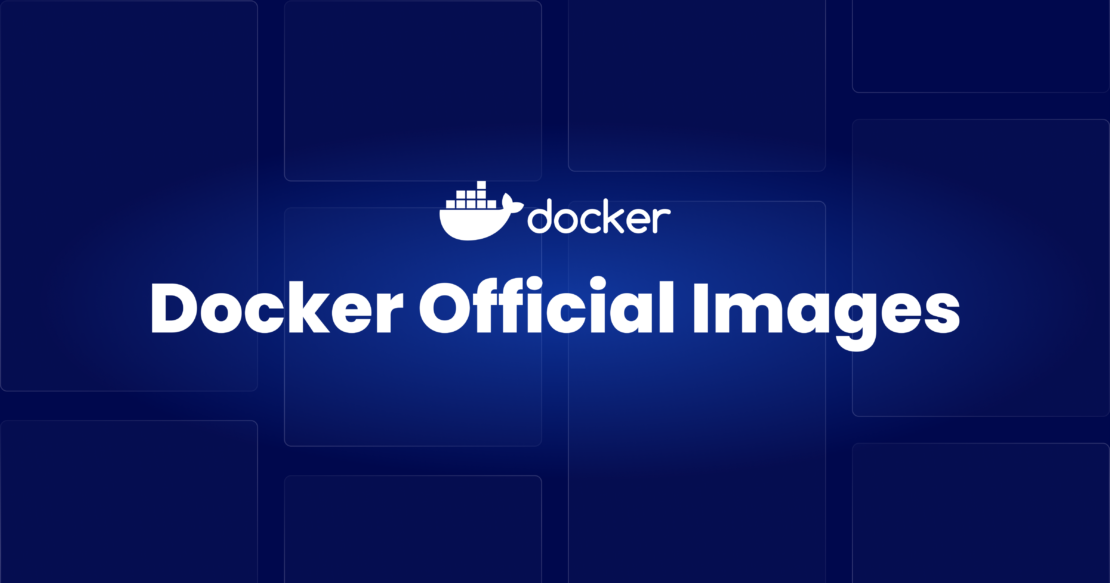Docker Official Images are a curated set of Docker repositories hosted on Docker Hub that provide a wide range of pre-configured images for popular language runtimes and frameworks, cloud-first utilities, data stores, and Linux distributions. These images are maintained and vetted, ensuring they meet best practices for security, usability, and versioning, making it easier for developers to deploy and run applications consistently across different environments.
Docker Official Images are an important component of Docker’s commitment to the security of both the software supply chain and open source software. Docker Official Images provide thousands of images you can use directly or as a base image when building your own images. For example, there are Docker Official Images for Alpine Linux, NGINX, Ubuntu, PostgreSQL, Python, and Node.js. Visit Docker Hub to search through the currently available Docker Official Images.
In this blog post, we address three common misconceptions about Docker Official Images and outline seven ways they help secure the software supply chain.

3 common misconceptions about Docker Official Images
Even though Docker Official Images have been around for more than a decade and have been used billions of times, they are somewhat misunderstood. Who “owns” Docker Official Images? What is with all those tags? How should you use Docker Official Images? Let’s address some of the more common misconceptions.
Misconception 1: Docker Official Images are controlled by Docker
Docker Official Images are maintained through a partnership between upstream maintainers, community volunteers, and Docker engineers. External developers maintain the majority of Docker Official Images Dockerfiles, with Docker engineers providing insight and review to ensure best practices and uniformity across the Docker Official Images catalog. Additionally, Docker provides and maintains the Docker Official Images build infrastructure and logic, ensuring consistent and secure build environments that allow Docker Official Images to support more than 10 architecture/operating system combinations.
Misconception 2: Docker Official Images are designed for a single use case
Most Docker Official Images repositories offer several image variants and maintain multiple supported versions. In other words, the latest tag of a Docker Official Image might not be the right choice for your use case.
Docker Official Images tags
The documentation for each Docker Official Images repository contains a “Supported tags and respective Dockerfile links” section that lists all the current tags with links to the Dockerfiles that created the image with those tags (Figure 1). This section can be a little intimidating for first-time users, but keeping in mind a few conventions will allow even novices to understand what image variants are available and, more importantly, which variant best fits their use case.

- Tags listed on the same line all refer to the same underlying image. (Multiple tags can point to the same image.) For example, Figure 1 shows the
ubuntuDocker Official Images repository, where the20.04,focal-20240216, andfocaltags all refer to the same image.
- Often the
latesttag for a Docker Official Images repository is optimized for ease of use and includes a wide variety of software helpful, but not strictly necessary, when using the main software packaged in the Docker Official Image. For example,latestimages often include tools like Git and build tools. Because of their ease of use and wide applicability,latestimages are often used in getting-started guides.
- Some operating system and language runtime repositories offer “slim” variants that have fewer packages installed and are therefore smaller. For example, the
python:3.12.2-bookwormimage contains not only the Python runtime, but also any tool you might need to build and package your Python application — more than 570 packages! Compare this to thepython:3.12.2-slim-bookwormimage, which has about 150 packages.
- Many Docker Official Images repositories offer “alpine” variants built on top of the Alpine Linux distribution rather than Debian or Ubuntu. Alpine Linux is focused on providing a small, simple, and secure base for container images, and Docker Official Images alpine variants typically aim to install only necessary packages. As a result, Docker Official Images alpine variants are typically even smaller than “slim” variants. For example, the linux/amd64
node:latestimage is 382 MB, thenode:slimimage is 70 MB, and thenode:alpineimage is 47 MB.
- If you see tags with words that look like Toy Story characters (for example, bookworm, bullseye, and trixie) or adjectives (such as jammy, focal, and bionic), those indicate the codename of the Linux distribution they use as a base image. Debian-release codenames are based on Toy Story characters, and Ubuntu releases use alliterative adjective-animal appellations. Linux distribution indicators are helpful because many Docker Official Images provide variants built upon multiple underlying distribution versions (for example,
postgres:bookwormandpostgres:bullseye).
- Tags may contain other hints to the purpose of their image variant. Often these are explained later in the Docker Official Images repository documentation. Check the “How to use this image” and/or “Image Variants” sections.
Misconception 3: Docker Official Images do not follow software development best practices
Some critics argue that Docker Official Images go against the grain of best practices, such as not running container processes as root. While it’s true that we encourage users to embrace a few opinionated standards, we also recognize that different use cases require different approaches. For example, some use cases may require elevated privileges for their workloads, and we provide options for them to do so securely.
7 ways Docker Official Images help secure the software supply chain
We recognize that security is a continuous process, and we’re committed to providing the best possible experience for our users. Since the company’s inception in 2013, Docker has been a leader in the software supply chain, and our commitment to security — including open source security — has helped to protect developers from emerging threats all along the way.
With the availability of open source software, efficiently building powerful applications and services is easier than ever. The transparency of open source allows unprecedented insight into the security posture of the software you create. But to take advantage of the power and transparency of open source software, fully embracing software supply chain security is imperative. A few ways Docker Official Images help developers build a more secure software supply chain include:
- Open build process
Because visibility is an important aspect of the software supply chain, Docker Official Images are created from a transparent and open build process. The Dockerfile inputs and build scripts are all open source, all Docker Official Images updates go through a public pull request process, and the logs from all Docker Official Images builds are available to inspect (Jenkins / GitHub Actions).
- Principle of least privilege
The Docker Official Images build system adheres strictly to the principle of least privilege (POLP), for example, by restricting writes for each architecture to architecture-specific build agents.
- Updated build system
Ensuring the security of Docker Official Images builds and images is paramount. The Docker Official Images build system is kept up to date through automated builds, regular security audits, collaboration with upstream projects, ongoing testing, and security patches.
- Vulnerability reports and continuous monitoring
Courtesy of Docker Scout, vulnerability insights are available for all Docker Official Images and are continuously updated as new vulnerabilities are discovered. We are committed to continuously monitoring our images for security issues and addressing them promptly. For example, we were among the first to provide reasoned guidance and remediation for the recent xz supply chain attack. We also use insights and remediation guidance from Docker Scout, which surfaces actionable insights in near-real-time by updating CVE results from 20+ CVE databases every 20-60 minutes.
- Software Bill of Materials (SBOM) and provenance attestations
We are committed to providing a complete and accurate SBOM and detailed build provenance as signed attestations for all Docker Official Images. This allows our users to have confidence in the origin of Docker Official Images and easily identify and mitigate any potential vulnerabilities.
- Signature validation
We are working on integrating signature validation into our image pull and build processes. This will ensure that all Docker Official Images are verified before use, providing an additional layer of security for our users.
- Increased update frequency
Docker Official Images provide the best of both worlds: the latest version of the software you want, built upon stable versions of Linux distributions. This allows you to use the latest features and fixes of the software you are running without having to wait for a new package from your Linux distribution or being forced to use an unstable version of your Linux distribution. Further, we are working to increase the throughput of the Docker Official Images build infrastructure to allow us to support more frequent updates for larger swaths of Docker Official Images. As part of this effort, we are piloting builds on GitHub Actions and Docker Build Cloud.
Conclusion
Docker’s leadership in security and protecting open source software has been established through Docker Official Images and other trusted content we provide our customers. We take a comprehensive approach to security, focusing on best practices, tooling, and community engagement, and we work closely with upstream projects and SIGs to address security issues promptly and proactively.
Docker Official Images provide a flexible and secure way for developers to build, ship, test, and run their applications. Docker Official Images are maintained through a partnership between the Docker Official Images community, upstream maintainers/volunteers, and Docker engineers, ensuring best practices and uniformity across the Docker Official Images catalog. Each Docker Official Image offers numerous image variants that cater to different use cases, with tags indicating the purpose of each variant.
Developers can build using Docker tools and products with confidence, knowing that their applications are built on a secure, transparent foundation.
Looking to dive in? Get started building with Docker Official Images today.
Learn more
- Browse the available Docker Official Images.
- Visit hub.docker.com and start developing.
- Find Docker Official Images on GitHub.
- Learn more about Docker Hub.
- Read:
